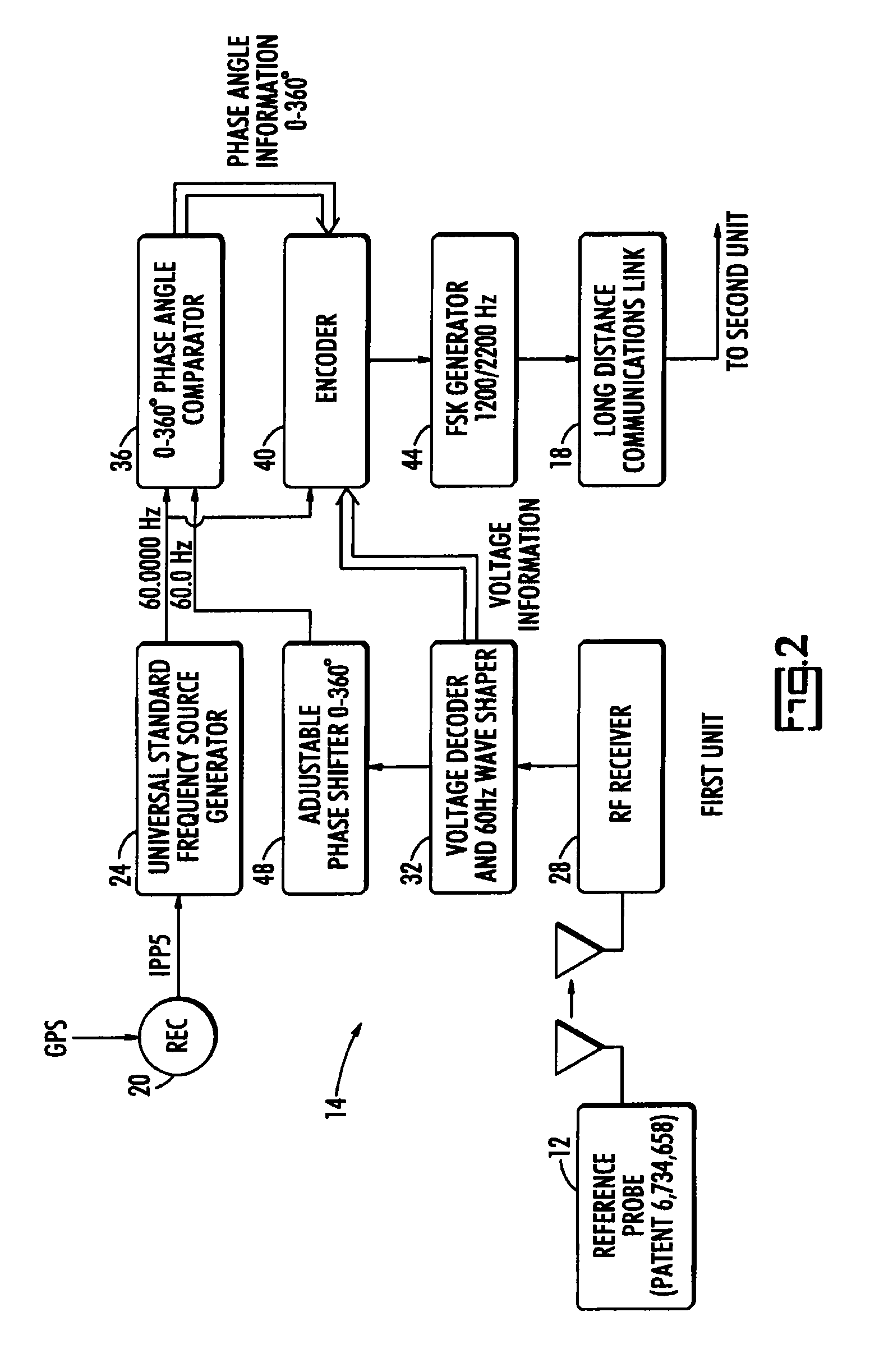Long range phasing voltmeter
a phasing voltmeter and long-range technology, applied in the direction of voltage-current phase angle, phase sequence/synchronization indication, instruments, etc., can solve the problems of individual phase identification loss, inability to accurately identify individual conductors, and loss of phase identification, so as to achieve accurate determination of phase difference
- Summary
- Abstract
- Description
- Claims
- Application Information
AI Technical Summary
Benefits of technology
Problems solved by technology
Method used
Image
Examples
Embodiment Construction
[0020]The present invention is a long range phasing voltmeter system that is an improvement over existing long range phasing voltmeter systems. The improvements lie in the system's ability to accurately determine multiple parameters of an electrical system, such as phase, phase angle, phase sequence, phase rotation, voltage and voltage difference, when the electrical conductors are separated by a distance that may be many miles.
[0021]The present invention is preferably applied to the phasing voltmeter system disclosed and described in U.S. Pat. No. 6,734,658 that includes a master probe and a supplemental probe. The supplemental probe measures the time-varying voltage signal on the reference conductor; the master probe measures the time-varying voltage on the field conductor. The term supplemental probe in U.S. Pat. No. 6,734,658 is replaced herein with the term reference probe, which probe measures the voltage on an arbitrarily-designated reference conductor. The term master probe ...
PUM
 Login to View More
Login to View More Abstract
Description
Claims
Application Information
 Login to View More
Login to View More - R&D
- Intellectual Property
- Life Sciences
- Materials
- Tech Scout
- Unparalleled Data Quality
- Higher Quality Content
- 60% Fewer Hallucinations
Browse by: Latest US Patents, China's latest patents, Technical Efficacy Thesaurus, Application Domain, Technology Topic, Popular Technical Reports.
© 2025 PatSnap. All rights reserved.Legal|Privacy policy|Modern Slavery Act Transparency Statement|Sitemap|About US| Contact US: help@patsnap.com



